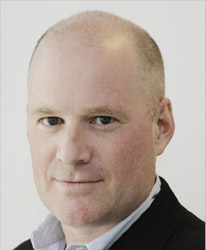Confronting an economy in which falling unemployment is failing to kindle inflation, as the supposed laws of economics say it should, the European Central Bank counsels “patience, persistence and prudence.”
 Investors may need to add “suspension of disbelief” to that. The data, both in the eurozone and the United States, is not supportive of the old verities embodied in the Phillips curve, which holds that as unemployment falls, inflation will rise.
Investors may need to add “suspension of disbelief” to that. The data, both in the eurozone and the United States, is not supportive of the old verities embodied in the Phillips curve, which holds that as unemployment falls, inflation will rise.
Minutes from the ECB’s July meeting, at which rates were held steady at 0.00 percent, included a lengthy discussion of the puzzling disconnect between inflation and employment, which is particularly notable in Germany, where a 3.8 percent unemployment rate is producing very little wage pressure. Some explanations, like deleveraging, may pass, but others may be with us for a lot longer. “Changes in labor markets, work contracts and wage-setting processes, benefiting from the reforms introduced in previous years, which could imply a structural break in the Phillips curve,” are likely factors, according to the minutes.
“Overall, while members considered that the ongoing economic expansion gave reason for confidence that inflation dynamics would strengthen over time, they emphasized that patience, persistence and prudence were needed, as this process was expected to take time and remained contingent on a very substantial degree of monetary policy accommodation. ”Prudence is understandable in the face of an unexplained phenomenon, and patient the ECB has certainly been.
The problem with the persistence part is not just that it is advice that amounts to doing the same actions and hoping for different results, but that, as even the ECB acknowledges, the phenomenon of a breakdown in the Phillips curve relationship is not unique to Europe. About 12 percent of firms in the euro zone report labour shortages as a factor limiting production, more than during the fat times before the great financial crisis. Yet core inflation in the euro zone remained last month at 1.3 percent. The United States has had no real structural labour reforms, only a continual grinding down to bone in wage terms and conditions. US banks are also, so we are told, in good shape and able to provide intermediate credit as needed, so the deleveraging argument works less well there.
The Federal Reserve, whose minutes from its July meeting, at which rates were held unchanged at 1.0-1.25 percent, is also wrestling with the validity of the Phillips curve. US inflation has remained below the 2 percent unofficial target for more than five years, while unemployment declined to 4.3 percent.
The Fed, which markets expect to begin selling down its $4.5 trillion portfolio of bonds in September and hike again in December, is actually having discussions in which “many” policymakers see some chance that inflation remains below 2 percent for longer than expected, with “several” seeing risks tilted to the downside. In minutes that substituted “the framework” for “the Phillips curve,” doubts were raised - are all the more telling for being understated. “A few participants cited evidence suggesting that this framework was not particularly useful in forecasting inflation. However, most participants thought that the framework remained valid. "A host of possible explanations was offered: technology, global developments and the somewhat circular idea of “diminished responsiveness of prices to resource pressures.”
That last is not an explanation; it is a description. We may as well say a flood is caused by rising waters or night falls when the light goes away. Maybe Monday’s solar eclipse will restore the status quo in which prices go up when unemployment goes down.
But that is as likely and good an explanation as anything offered in the minutes of the world’s two most powerful central banks. One idea broached at the Fed meeting was allowing the economy to "run hot," with an overshoot in unemployment hopefully kick-starting inflation.
But it´s not clear why we should expect the fall to, say, 3.8 percent unemployment from 4.3 percent that might result from allowing a hot economy would have an impact, when we have not seen any on our way down to 4.3 percent. It is understandable that the ECB and Fed are loath to give up their existing framework without a serviceable replacement, and more understandable still that they will persist in policies that have thus far not demonstrated their utility. But expecting flagged interest rate hikes and bond sales despite lack of evidence the Phillips curve still holds is the kind of suspension of disbelief better suited to reading novels than betting on the economy.
The writer is a Reuters columnist